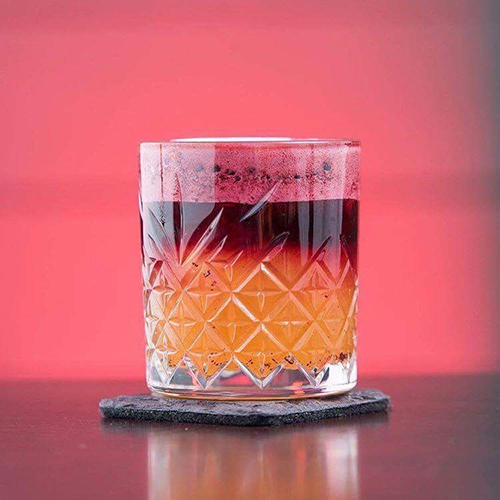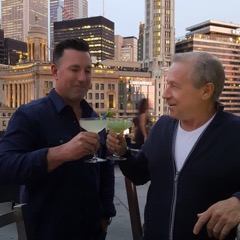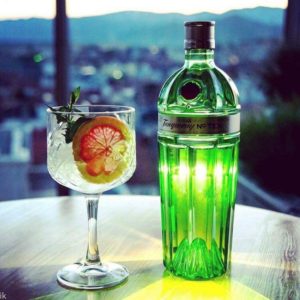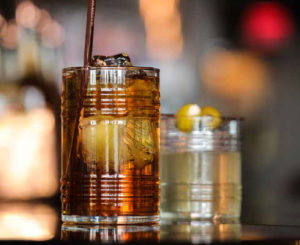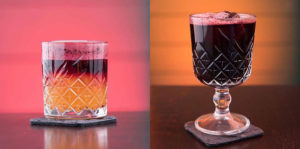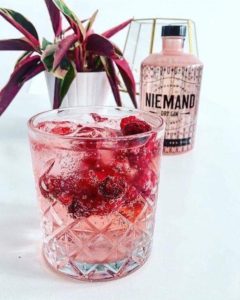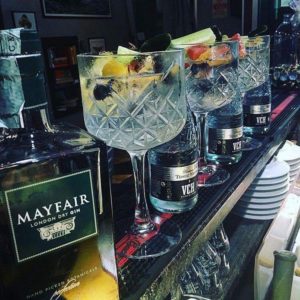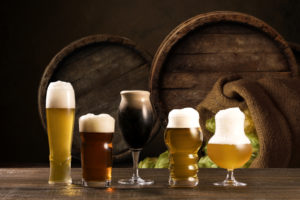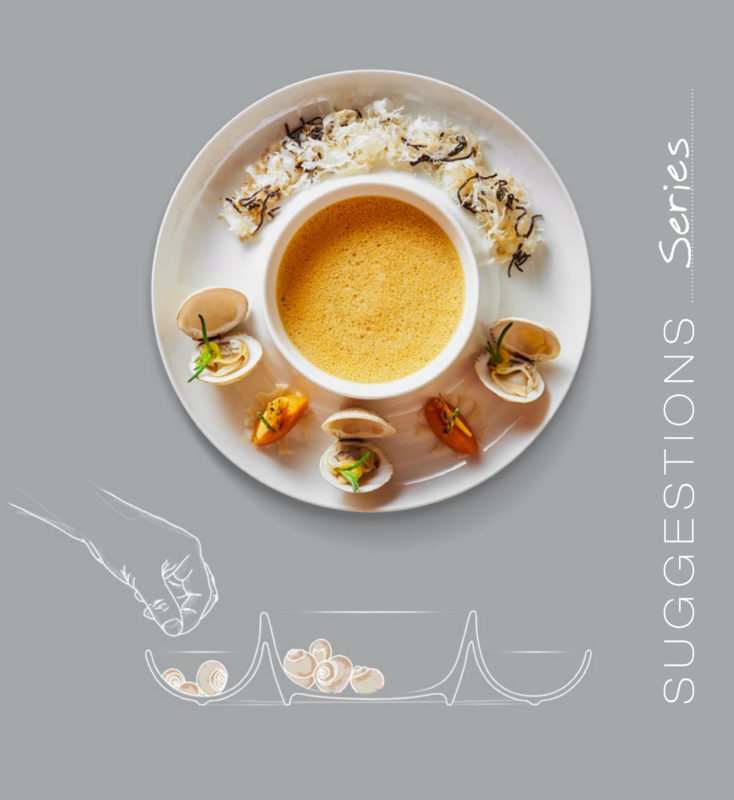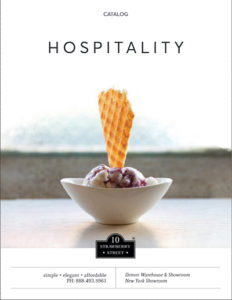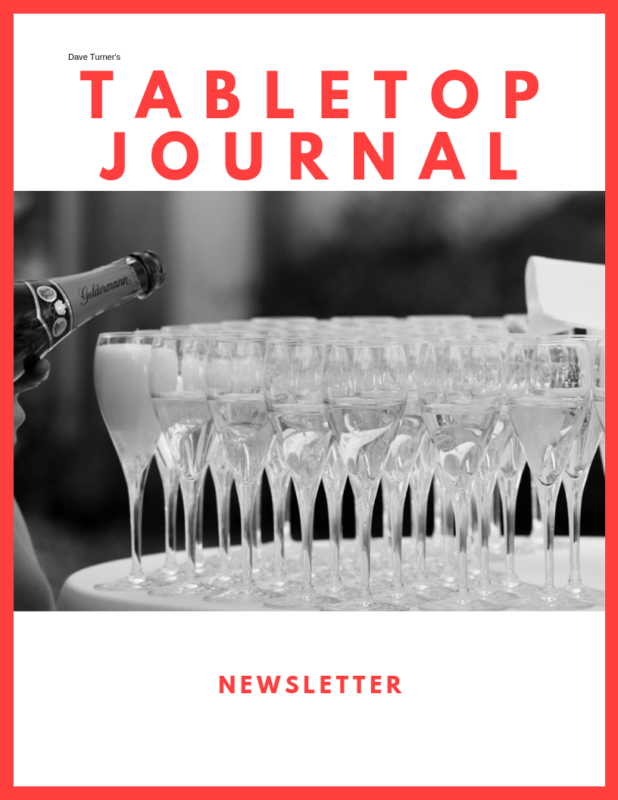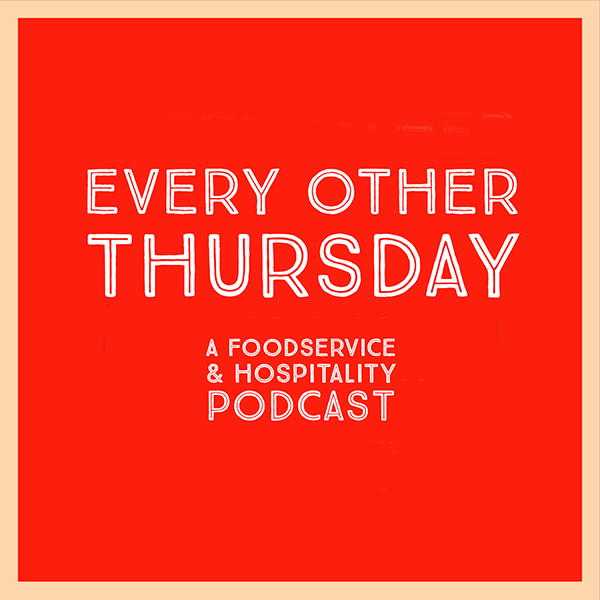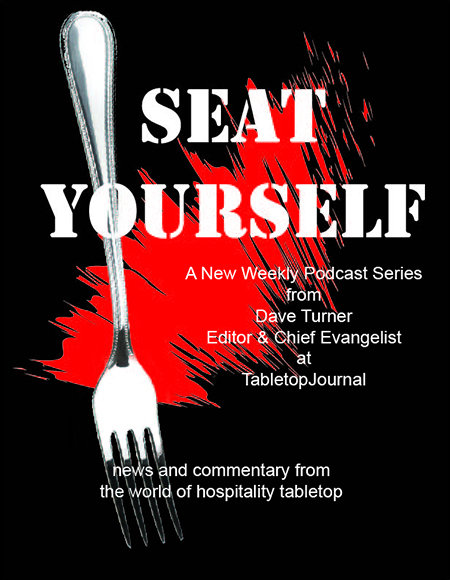Jesper Efferbach, Founder of Jeff&Co (right) with Chris Coursen, President of Hospitality Glass Brands (left)
Jesper Efferbach is the founder of Jeff & Co a Danish designer of glassware and other hospitality tabletop products. Efferbach works with top tabletop companies like global glassware leader Pasabahce and others. His experience in the hospitality industry is wide and varied, having worked as a chef initially, and then moving into restaurant and F&B management.
From there, Jesper also held various sales and marketing positions for industry leaders within the beer, food, and tabletop worlds. Now, Jesper is lending his vast industry experience to product improvement and innovation from the design perspective.
We recently caught up with this very busy designer and here’s what Jesper had to tell us……
TabletopJournal: You’ve had a wide-ranging career as a chef and a sales & marketing manager in both the retail and foodservice sectors. Tell us a little of your background and how you found your way to becoming a premier designer of glassware? And, how have those experiences helped you now as a designer?
Jesper Efferbach: I am educated as a Chef & Waiter in Denmark & I have worked as a Chef, Kitchen manager & F&B Director in several countries, Denmark, France & Canada. Where I worked at both larger hotels & Michelin star restaurants.
After a number of years working in the industry, I got the opportunity to work for the Carlsberg HQ in Copenhagen Denmark , where I was in charge of their on-trade departments, I work for Carlsberg for approximately 6 years, during this time I had responsibilities in several countries, UK, Sweden, Norway, Sri Lanka & of course Denmark. After Carlsberg I worked for both Compass Group & Nestlé until I joined Arc international as area director (Nordic & Baltic area) where I spent approximately 6 years and after that I spent another 6 years with Libbey Inc. (as European sales director & director of global chains & strategic accounts) So all in all I believe that I have a fairly good knowledge from “both sides of the table” in the tabletop industry. For the past two year I among other things been working as a global consultant for Pasabahce, supporting them in all aspects in relation to their commercial efforts in the global foodservice industry & I have also been part of the development of a new supply chains system for them, etc.
My first interest for designing came during my chef days, mainly coming from when, from time to time, you would get “very” frustrated when I couldn’t find the plates or glasses that you wanted to use for your ideas for new dishes & presentations, But I didn’t get the chance to design any tableware before I joined Nestlé where I designed an ice cream plate for higher end restaurants,
When I started to work for Libbey, I was put in charge of creating the European assortment by combining products from all Libbey factories. Here, we went searching in the “old” mold catalogues & found some interesting products that we could produce & relaunch. At the same time, I worked with the Libbey design team in developing new foodservice items and that really kick-started my interest for designing products myself. But it was not until last year when Pasabahce asked me if I had any ideas for new products for their assortment I got the opportunity to get my own designs & ideas produced and launched globally.
I strongly believe that my background from working in the foodservice industry has given me a huge advantage in designing, I have learned a large number of things that I use when I create my designs. from the practical use of the products (storage, handling, workflow, creativity, up-selling, etc.) at end-user level, to the experiences gained in sales/marketing, production, senior management from the tableware industry, where I have learned about the needs & wants from the supplier and production side.
I also see the fact that I also work as a consultant in the tableware industry and in the foodservice industry as an advantage, this also keeps me updated about both the trends in the global industry and the production technical possibilities available.
TIN CAN
TJ: Designers tell us they often find inspiration in unusual places. Where do you get your inspiration?
JE: I can’t really say where and when I get my ideas, since I get my inspiration in a huge number of different places. That can be during cooking like with my design named TINCAN. I was standing with a can of pineapple in my hand and the paper on the can was coming off, due to my wet hand. I looked at the can and got the idea that this shape could be used for cocktail, I made a drawing, showed it to Pasabahce, and, from there, the “rest is history” as they say.
With the TIMELESS line, I was looking at old family pictures and on a picture of a dinner at my great grandparents house I noticed the “old” Czech crystal glasses on the table. I started to play with the designs and decided to add stemware to the possible collection, mixing the traditional with some more modern shapes. With other products, I just think back of what I was missing during my days working in the kitchen or at restaurant or bar. Then, an idea or two usually “pops up” and then I begin the design stage from there. Or, I get an idea when I am out eating or shopping. I can also get some basic rough ideas about a design from social media, then I work to create my “own” look from there.
TIMELESS
TJ: Cocktails are trending strong these days. When designing new cocktail glasses, what do you do you try to achieve? What are the key elements you try to incorporate in a cocktail glass design? Is that different than when you design wineglasses?
JE: When I work on a new design for a cocktail glass, I always start out by the phase “the rule in mixology is that there is no rule”. For me as a designer it’s important that I add value to the users of my design by making room for the creativity of the bartender, combined with the practical part like durability, stack-ability and the visual experience of the product. When I work on wine glasses I first decide if it’s a high end glass or a more “regular” glass-range that I want/have to create. Then, I look at the visual appearance of the glass – the elegance, the balance – and how I can make it as durable and practical as possible.
TJ: Staying on cocktail glass design…. how much influence on design does the type of cocktail and the targeted ounce capacity have? How do you determine the proper glass diameter and proportion (width v. height)?
JE: In general I don’t like to “tell” the end-user what to serve in my designs I want to leave it up to their creativity, but since the glasses are commercial products there are different “traditions & rules” that you need to follow to be able to compete in the different markets around the world. When I am working on specific volume products, I always try and find a way to adjust and fit the designs to match the different needs and wants, on the different markets around the world.
When I work with and train both back office & commercial people in the glassware industry, I often state that as a commercial glassware manufacturer you basically just producing a “container” with a opening in one end and hopefully not one in the other end, with the sole purpose “in life” to transport a liquid product from point A to point B. The rest is up to the creativity, strategy & production capabilities of the individual factories, but you have to add value to your customers – the wholesalers, dealers, chains, and the actual end-users in order to be successful.
TJ: Last one on cocktail glasses…. these days, are cocktail glass sizes trending smaller? Or larger?
JE: I do believe that the preferred size of the glasses often are depending on the country or area that you are working in, some countries want a larger glass capacity, because they use a lot of ice or other reasons. Other countries use smaller sized glasses due to the temperature, tradition etc. But, in general, you can say that because the general alcohol consumption is declining, you slowly see smaller sized glasses becoming more and more popular, especially when we talk about beer and alcohol glasses. The average persons don’t want to drink as much as they used to but they still like to enjoy a beer or a drink from time to time.
TJ: Our mantra is that #TabletopMatters. What role do you believe that glassware – cocktail glasses or wineglasses – play in the guest dining or guest beverage experience?
JE: When we talk about the visual appearance of a glass whether it’s a cocktail glass or a wine or beer glass, we have to keep in mind that the first impression is extremely important for us humans. Actually since most of us have a tendency to put way to much value in the first impressions “in life”, the bar, restaurant or café can earn a lot “points” with their guests by making sure that the visual appearance of both the actual business – and the dishes and drinks served – is as appealing or good looking as possible. Here the choice of glass or plate is very important and, when used correctly, the design of these products can help lift the total dining or drinking experience to a much higher level. Through that, the design can help to build both the image and the turnover of the business.
I am a strong believer in using the knowledge that we have about the human mind and how our mind reacts and works in different situations. How we use our senses (smell, taste, feel & visual) when we eat and drink, in my opinion, the foodservice industry is critical. Industry suppliers can benefit a lot from using this knowledge actively in their daily work.
TJ: Rumor has it that you are now involved in designing dinnerware. How is that going and do you find that to be a different design and product development process than for glassware?
JE: Yes, I am fortunate enough to have been asked to design both porcelain and stoneware products. In general, I take the same approach to the dinnerware design process as I do to the glass process, since the main purpose for both products are basically the same. The demands from the customers and end-users are to a large extend also the same in relation to adding value, durability and the visual appearance.
TJ: While we’re sure you love all the products you’ve been involved in designing….is there on or two that really standout? Perhaps a favorite? And, please tell us the story behind why they’re so special.
JE: As mentioned earlier, many of the products have their own story or beginning, but I have to admit that I have a couple of favorites in between both the existing and the coming products, one is the TINCAN & it’s because of the history of the product & another is the TIMELESS gin and tonic glass, I can’t really explain why it’s a favorite, but maybe it’s because it’s quite different from most other glasses on the market. In addition, the fact that a number of people was sure that I was “losing my mind” when I told them about the design. Luckily for me, Pasabahce believed in my idea and I can see from both the sales figures and the feedback I get about the glass and it’s design on my social media pages that it’s growing rapidly in popularity all over the world.
TJ: When you’re not designing great new glassware ranges and tabletop products, what do you like to do to re-charge and replenish those creative juices?
JE: I am in general what some people might describe as “quite” active, besides my businesses that takes me around the world, I like to be active in mind and soul. I work out as often as I can both when I am home and on my travels. On the travels I use the hour to hour and a half to “recharge” and also think about the tasks ahead. That recharging quite often ends up in new, creative ideas, I also do quite a lot of spinning and bike riding, quite often it’s together with my son and sometimes also my wife (when her health allows her to be active).
I also like to do charity work and help where I can, so I am a volunteer “making wishes come true” with Make A Wish Foundation in Denmark. Another thing that’s very important for me is to help children and families hit by cancer. I do guest chef appearances both in Denmark and when I travel, all proceeds from this goes to local children cancer organizations, One of the reason for this is that I was diagnosed with cancer in 2010 and have managed to “come out at the other end”. I am now cancer free for the 6th year, despite the fact that I was given 25% chance to survive.
Finally, from time to time I also help out by “walking the streets” of my hometown, helping out especially teenagers and kids in need of a different sort, we call it the “nighthawks”

